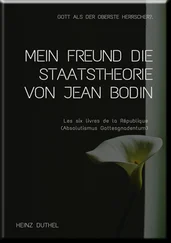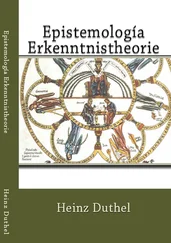Thousands lament the imminent passing of the Buddha
Now at that time the Kusinara Mallans had met for some business in their assembly hall. Ven. Ananda went to the assembly hall and on arrival announced to them, "Tonight, Vasitthas, in the last watch of the night, the total Unbinding of the Tathagata will occur. Come out, Vasitthas! Come out, Vasitthas! Don't later regret that 'The Tathagata's total Unbinding occurred within the borders of our very own town, but we didn't get to see him in his final hour!'" When they heard Ven. Ananda, the Mallans together with their sons, daughters, & wives were shocked, saddened, their minds overflowing with sorrow. Some of them wept, tearing at their hair; they wept, uplifting their arms. As if their feet were cut out from under them, they fell down and rolled back & forth, crying, "All too soon, the Blessed One will be totally unbound! All too soon, the One Well-gone will be totally unbound! All too soon, the One with Eyes will disappear from the world!"
Then the Mallans together with their sons, daughters, & wives — shocked, saddened, their minds overflowing with sorrow — went to Ven. Ananda at Upavattana, the Mallans' sal-grove near Kusinara.
As long as the noble Eightfold Path is practiced, there will be arahants
"In any doctrine & discipline where the noble eightfold path is not found, no contemplative of the first... second... third... fourth order [stream-winner, once-returner, non-returner, or arahant] is found. But in any doctrine & discipline where the noble eightfold path is found, contemplatives of the first... second... third... fourth order are found. The noble eightfold path is found in this doctrine & discipline, and right here there are contemplatives of the first... second... third... fourth order. Other teachings are empty of knowledgeable contemplatives. And if the monks dwell rightly, this world will not be empty of arahants."
The Buddha's parting words
Then the Blessed One addressed the monks, "Now, then, monks, I exhort you: All fabrications are subject to decay. Bring about completion by being heedful." Those were the Tathagata's last words.
Then the Blessed One entered the first jhana. Emerging from that he entered the second jhana. Emerging from that, he entered the third... the fourth jhana... the dimension of the infinitude of space... the dimension of the infinitude of consciousness... the dimension of nothingness... the dimension of neither perception nor non-perception. Emerging from that, he entered the cessation of perception & feeling.
Then the Blessed One, emerging from the cessation of perception & feeling, entered the dimension of neither perception nor non-perception. Emerging from that, he entered the dimension of nothingness... the dimension of the infinitude of consciousness... the dimension of the infinitude of space... the fourth jhana... the third... the second... the first jhana. Emerging from the first jhana he entered the second... the third... the fourth jhana. Emerging from the fourth jhana, he immediately was totally Unbound.
Frequently Asked Questions About Buddhism
Over the years I've received scores of e-mail queries from people seeking answers to basic questions about Buddhism. Here are my answers to some of the most common ones. These answers reflect my own opinions and interpretations and in no way represent a "definitive" Theravada Buddhist point of view. My hope is that these answers, along with the accompanying links and references to suttas and other texts, will serve as useful hints to steer you towards finding answers of your own.
Buddhist doctrine and terminology
Is Buddhism a religion or a philosophy?
The Buddha referred to his teachings simply as Dhamma-vinaya — "the doctrine and discipline" — but for centuries people have tried to categorize the teachings in various ways, trying to fit them into the prevailing molds of cultural, philosophical, and religious thought. Buddhism is an ethical system — a way of life — that leads to a very specific goal and that possesses some aspects of both religion and philosophy:
It is a philosophy.
Like most philosophies, Buddhism attempts to frame the complexities of human existence in a way that reassures us that there is, in fact, some underlying order to the Universe. In the Four Noble Truths the Buddha crisply summarizes our predicament: there is suffering, it has a cause, it has an end, and there is a way to reach the end. The teachings on kamma provide a thorough and logically self-consistent description of the nature of cause-and-effect. And even the Buddhist view of cosmology, which some may at first find farfetched, is a logical extension of the law of kamma. According to the Dhamma, a deep and unshakable logic pervades the world.
It is not a philosophy.
Unlike most philosophical systems, which rely on speculation and the power of reason to arrive at logical truths, Buddhism relies on the direct observation of one's personal experience and on honing certain skills in order to gain true understanding and wisdom. Idle speculation has no place in Buddhist practice. Although studying in the classroom, reading books, and engaging in spirited debate can play a vital part in developing a cognitive understanding of basic Buddhist concepts, the heart of Buddhism can never be realized this way. The Dhamma is not an abstract system of thought designed to delight the intellect; it is a roadmap to be used, one whose essential purpose is to lead the practitioner to the ultimate goal, nibbana.
It is a religion.
At the heart of each of the world's great religions lies a transcendent ideal around which its doctrinal principles orbit. In Buddhism this truth is nibbana, the hallmark of the cessation of suffering and stress, a truth of utter transcendence that stands in singular distinction from anything we might encounter in our ordinary sensory experience. Nibbana is the sine qua non of Buddhism, the guiding star and ultimate goal towards which all the Buddha's teachings point. Because it aims at such a lofty transcendent ideal, we might fairly call Buddhism a religion.
It is not a religion.
In stark contrast to the world's other major religions, however, Buddhism invokes no divinity, no supreme Creator or supreme Self, no Holy Spirit or omniscient loving God to whom we might appeal for salvation.1 Instead, Buddhism calls for us to hoist ourselves up by our own bootstraps: to develop the discernment we need to distinguish between those qualities within us that are unwholesome and those that are truly noble and good, and to learn how to nourish the good ones and expunge the bad. This is the path to Buddhism's highest perfection, nibbana. Not even the Buddha can take you to that goal; you alone must do the work necessary to complete the journey:
"Therefore, Ananda, be islands unto yourselves, refuges unto yourselves, seeking no external refuge; with the Dhamma as your island, the Dhamma as your refuge, seeking no other refuge."
— DN 16
Despite its non-theistic nature, however, Buddhist practice does call for a certain kind of faith. It is not blind faith, an uncritical acceptance of the Buddha's word as transmitted through scripture. Instead it is saddha, a confidence born of taking refuge in the Triple Gem; it is a willingness to trust that the Dhamma, when practiced diligently, will lead to the rewards promised by the Buddha. Saddha is a provisional acceptance of the teachings, that is ever subject to critical evaluation during the course of one's practice, and which must be balanced by one's growing powers of discernment. For many Buddhists, this faith is expressed and reinforced through traditional devotional practices, such as bowing before a Buddha statue and reciting passages from the early Pali texts. Despite a superficial resemblance to the rites of many theistic religions, however, these activities are neither prayers nor pleas for salvation directed towards a transcendent Other. They are instead useful and inspiring gestures of humility and respect for the profound nobility and worth of the Triple Gem.
Читать дальше












